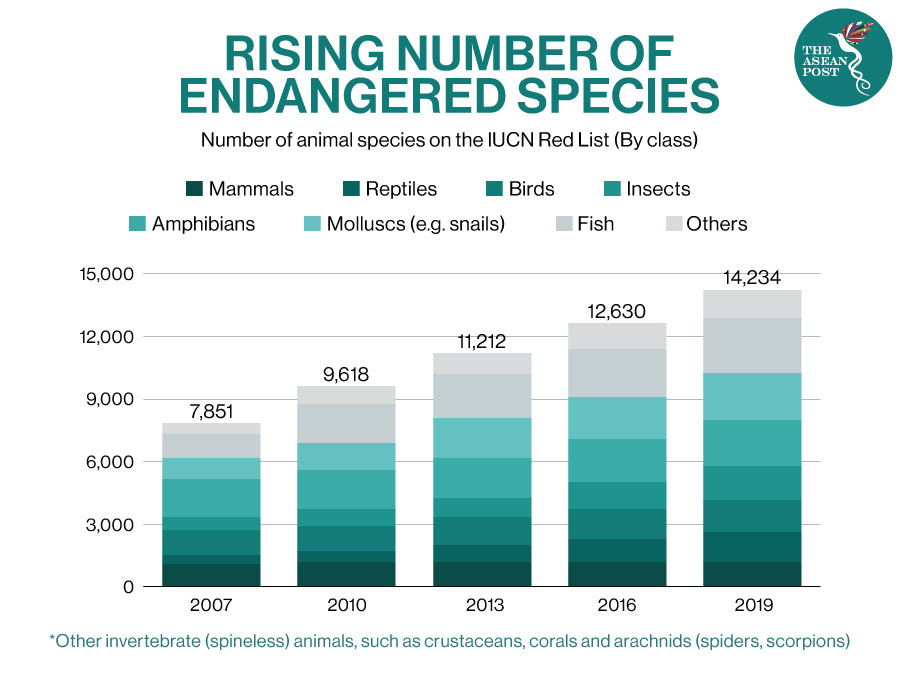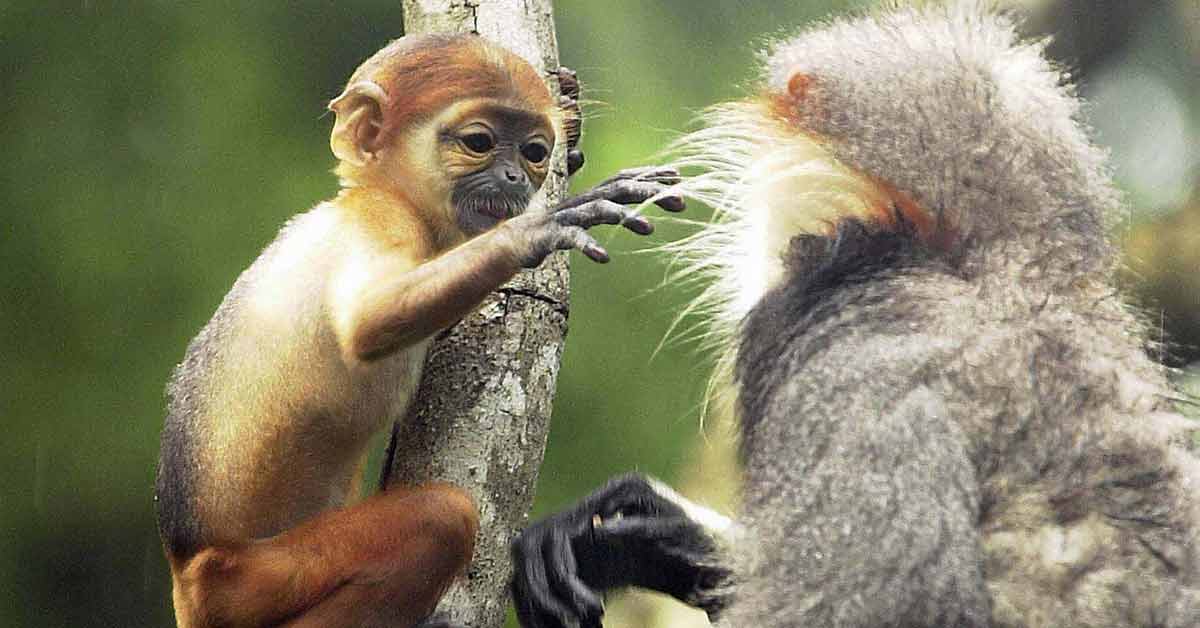There are more than 400 species of primates across the world, and at least 98 species recognised in Southeast Asia. Living primates include humans, monkeys, lemurs and apes. As primates are related, they are genetically similar. Human DNA, is on average, 96 percent identical to the DNA of our most distant primate relatives, and nearly 99 percent identical to our closest relatives, chimpanzees and bonobos, according to the American Museum of Natural History.
Some of the things living primates have in common are large brains (in relation to body size), hands adapted for grasping, long life spans and slow growth, few offspring (usually one at a time) and complex social groups.
However, while the human population experienced rapid growth – from just one billion in 1800 to 7.7 billion people today – other primate species are facing extinction.
This year alone, at least five Southeast Asian primates have been listed as “critically endangered” on the International Union for Conservation of Nature (IUCN) Red List of Threatened Species.

According to the Asian Species Action Partnership (ASAP), with primates’ long lifespan, low productivity and ease of being hunted, they are often at higher risk of extinction than other mammal species.
Langurs Going Extinct
One species recently listed as “critically endangered” is the Red-shanked Douc langur. It is among the most colourful of all primates and is typically described as “beautiful”. It is only found in Vietnam, Lao PDR and Cambodia.
Douc langurs spend a significant portion of their day eating leaves, flowers and fruits. Everything they need to survive is in the top of the canopy and rarely do they descend to the forest floor.
Unfortunately, it’s not entirely surprising that the biggest threat to the Douc is “the decline of habitat as the natural forests of the langurs are increasingly ceded to development projects,” said Bui Van Tuan, Head of Scientific Research at Green Viet, a non-profit organisation working to conserve ecosystems and endangered species in Vietnam’s Central and Central Highlands regions.
“The second threat is the risk of transmission of diseases between humans and the Douc, as well as from domesticated animals such as monkeys and dogs which could spread diseases to the Doucs,” the scientist explained.
“The third threat to Red-shanked Doucs is the problem of hunting and trapping,” he added.
A few days ago, the IUCN published its updated Red List and revealed that the endemic Lao Langur has been up-listed from “vulnerable” to “endangered.” Just like Douc langurs – and perhaps every other near-extinct species out there – their habitat is threated by agricultural and infrastructure encroachment, with smallholder farming, logging and mining being the main drivers of habitat loss.
Other than that, the Lao langur is also very threatened by hunting driven by the illegal wild meat and medicine trade, with demand for monkey bones for traditional medicine coming from neighbouring Vietnam and further afield in China.
“Recently I have seen the Lao langur being held illegally in captivity in a facility in Lak Sao. This trade, both for live animals, as well as for wild meat and sham medicine, must stop if we are to save this Lao endemic species and protect our Lao natural heritage,” said Sonephet Mounlamany, Illegal Wildlife Trade Program National Coordinator at the World Wide Fund for Nature (WWF)-Laos.
At the same time, just recently, a grey-furred langur with white-rimmed eyes and a fluffy head has been announced as a new primate species. Called the Popa langur, it is found in Myanmar and “looks like a bespectacled uncle,” said Frank Momberg, Director of Program Development for the Asia-Pacific region at the conservation organisation, Fauna & Flora International (FFI).
Nevertheless, the newly discovered primate is already facing extinction with numbers down to about 200 individuals. Threats to the Popa langur – again include hunting pressure, as well as habitat destruction and fragmentation. Although the species has yet to be assessed by the IUCN, researchers at the German Primate Center consider it as being “critically endangered” based on IUCN criteria.
From orangutans to gorillas, primates have received a great deal of research and conservation attention across the world.
There are many conservation actions like anti-poaching patrols, relocating animals, publicising conservation issues and reintroducing primates into their natural habitats. But despite the efforts, more than 60 percent of primate species are threatened with extinction, said Jo Setchell, Professor of Anthropology at Durham University.
“Tropical forest destruction has always been the main cause, but now it appears that hunting is just as serious a threat in some areas, even where the habitat is still quite intact. In many places, primates are quite literally being eaten to extinction,” said Russell A Mittermeier, President of Conservation International (CI).
Related Articles:
